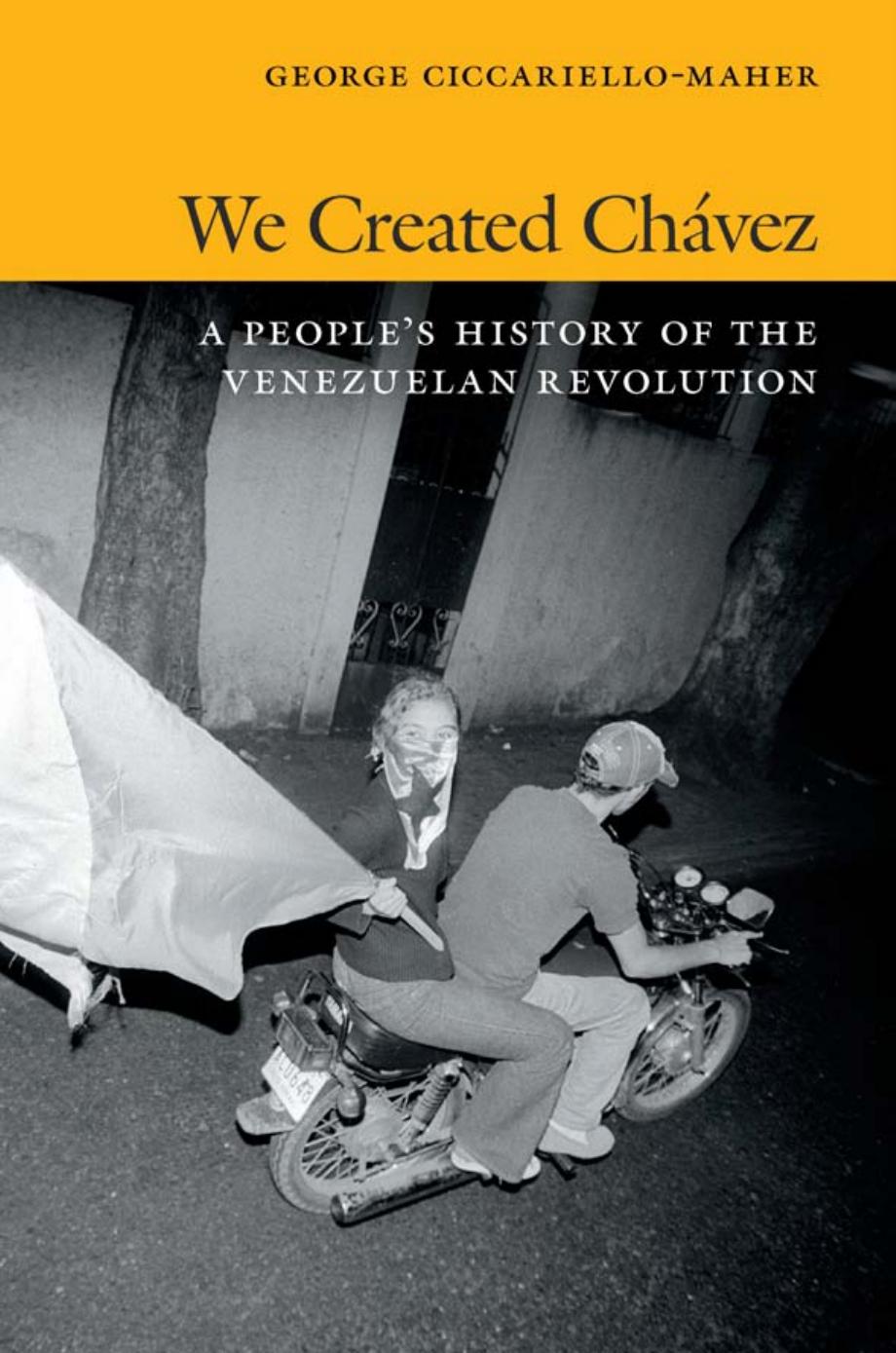We Created Chávez: A People’s History of the Venezuelan Revolution by George Ciccariello-Maher

Author:George Ciccariello-Maher [Ciccariello-Maher, George]
Language: eng
Format: epub, pdf
Tags: History, Non-Fiction, Politics
ISBN: 9780822354529
Amazon: 0822354527
Publisher: Duke University Press
Published: 2013-04-16T23:00:00+00:00
Second Interlude. Every Eleventh Has Its Thirteenth
There is perhaps only one event more revealing than a coup, and that is a coup that, while initially successful, is eventually reversed.1 Any coup serves to draw back the veil of polite society (however threadbare) to reveal the lines of force that traverse it, and a reversed coup is an even more powerful revelation of where, precisely, social power lies. It is in this sense that the mobilization of the Venezuelan masses in opposition to the coup of April 11, 2002—a constituent show of strength second only to the Caracazo—represents the best evidence to date that the sovereign people of Venezuela have the will and capacity to defend their vision of a new society. But if the events of April 2002 revealed the ferocious will of the people and their constituent power, thereby mirroring the lessons of the Caracazo—this was the same people and the same power—in concrete terms the picture was a far different one. After all, here was an explosively constituent moment that was aimed not at unseating an established order but at restoring one, an almost unprecedented alliance of constituent and constituted powers. This peculiarity was visible in a curious circuit: ministers from the overthrown Chávez government fled into the warm embrace of social movements, especially the armed militias of 23 de Enero, while representatives of these radical elements of the Bolivarian process took to the streets to fight the coup and make a return to the constitutional order not only possible, but imperative. Thus, this was a central moment for grappling with the peculiar relationship that exists in contemporary Venezuela between movement and state, constituent and constituted. Again, however, an apparent paradox disintegrates once we recognize that it was not a constituted order but a process— itself comprising the dynamic interplay between constituent and constituted—that the most revolutionary elements of the Venezuelan people were defending on those fateful days.
A Planned, Mediatic Coup
On April 11, 2002, the Venezuelan opposition activated snipers who fired on a largely pro-Chávez crowd that had gathered near Miraflores Palace to defend the president from the threat of an approaching and aggressive opposition march. This march, which was admittedly massive, had counted on the unwavering and unanimous support of the private, anti-Chavista media for its numbers; for days the media had called on the population not only to attend, but to do what was necessary to remove the “tyrant” once and for all. On that day, opposition forces gathered at Parque del Este for a scheduled march to the headquarters of the state-owned oil company PDVSA. It was there that opposition leaders took to the stage, egging the crowd on to more militant action against the government, and it was there that Carlos Ortega, head of the discredited and corrupt CTV union confederation (see chapter 7), called for an unscheduled and unpermitted march on the presidential palace, some seven miles to the west, where thousands of Chavistas had already gathered. As the opposition march drew nearer
Download
We Created Chávez: A People’s History of the Venezuelan Revolution by George Ciccariello-Maher.pdf
This site does not store any files on its server. We only index and link to content provided by other sites. Please contact the content providers to delete copyright contents if any and email us, we'll remove relevant links or contents immediately.
| Arms Control | Diplomacy |
| Security | Trades & Tariffs |
| Treaties | African |
| Asian | Australian & Oceanian |
| Canadian | Caribbean & Latin American |
| European | Middle Eastern |
| Russian & Former Soviet Union |
The Secret History by Donna Tartt(16620)
The Social Justice Warrior Handbook by Lisa De Pasquale(11489)
Thirteen Reasons Why by Jay Asher(7788)
This Is How You Lose Her by Junot Diaz(5768)
Weapons of Math Destruction by Cathy O'Neil(5035)
Zero to One by Peter Thiel(4823)
The Myth of the Strong Leader by Archie Brown(4789)
Promise Me, Dad by Joe Biden(4446)
Beartown by Fredrik Backman(4415)
Stone's Rules by Roger Stone(4415)
How Democracies Die by Steven Levitsky & Daniel Ziblatt(4398)
The Fire Next Time by James Baldwin(4342)
100 Deadly Skills by Clint Emerson(4076)
A Higher Loyalty: Truth, Lies, and Leadership by James Comey(4032)
Rise and Kill First by Ronen Bergman(4012)
The David Icke Guide to the Global Conspiracy (and how to end it) by David Icke(3881)
The Farm by Tom Rob Smith(3872)
Secrecy World by Jake Bernstein(3782)
The Doomsday Machine by Daniel Ellsberg(3730)
